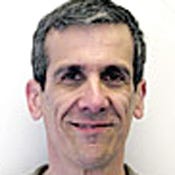Exchanging images of checks rather than paper will be costly to implement but worth the effort

A new law that lets banks send images of checks instead of paper could yield hefty savings but will require an overhaul in systems.
The Check Clearing for the 21st Century Act, signed into law last month and effective next October, gives banks the option of capturing check images and transmitting them to the banks on which they're drawn. In the conventional clearing process, banks and processors pay couriers to haul checks across town or across the country. The Federal Reserve, which processes checks for most of the nation's banks, spent $71.8 million last year on transporting checks.
The Fed earlier this month joined in an imaging project with the Small Value Payments Co., a consortium set up several years ago by the largest banks to develop and support state-of-the-art payment systems. Nine banks are piloting the project; they and the Fed will begin exchanging check images next year.
 Previously, banks could send images only with the consent of a receiving bank, and if the recipient wasn't willing to use images, the sending bank had to arrange to ship the original paper checks. Once the act goes into effect, if a receiving bank can't or won't accept images, the sender can transmit them to a processing-services provider close to the recipient, where they'll be printed and shipped to the receiving bank. By next October, "banks are going to move ahead much more aggressively with image-based clearing," says Steve Ledford, president of Global Concepts, a research company specializing in bank operations.
Previously, banks could send images only with the consent of a receiving bank, and if the recipient wasn't willing to use images, the sending bank had to arrange to ship the original paper checks. Once the act goes into effect, if a receiving bank can't or won't accept images, the sender can transmit them to a processing-services provider close to the recipient, where they'll be printed and shipped to the receiving bank. By next October, "banks are going to move ahead much more aggressively with image-based clearing," says Steve Ledford, president of Global Concepts, a research company specializing in bank operations.
Moving the clearing process to imaging will save banks and their customers an estimated $2 billion a year, including $500 million in back-office expenses like sorting, proofing, and balancing, and $1 billion in float reduction. Float, the time it takes to clear checks for payment, varies from one to four days. Reducing float helps boost banks' profitability by giving them and their customers faster access to funds. "In an electronic-exchange environment, float could be reduced to a day or even less," says Paul Obermeyer, head of operations services at Comerica Inc., a bank with $55 billion in assets.
It will take three to five years for imaging to overtake paper as the primary medium for check exchange, banking experts say. "It's a major retooling and reengineering effort," says Fred Herr, senior VP at the Federal Reserve Bank of Atlanta. Implementing check imaging will entail significant conversion costs, Ledford says, especially for medium-sized banks, which "are caught between being not large enough to have the scale of the largest banks and being too large for turnkey systems."
As check volumes have declined because of the growing use of alternatives such as electronic bill payment, the cost of processing checks has risen. It costs 4 to 5 cents to clear a paper check, about double the cost of using imaging. Much of the cost is in personnel expenses. With images, tasks such as comparing numerical figures on checks with written amounts are done by character-recognition software; people would be needed only to resolve problems.
Imaging has benefits beyond process improvements: It cuts from days to hours response time to customer and legal-authority inquiries, and it protects against forgery. Imaging also reduces physical-storage expenses; banks must keep copies of checks on file for seven years.
Viewpointe Archive Services Inc., a 3-year-old venture formed by J.P. Morgan Chase and Bank of America, stores more than 29 billion check images for various banks; its archive is growing by a billion images a month. Earlier this month, National City Corp., a bank with $121 billion in assets and a Viewpointe customer, introduced an online image-retrieval service; by last week, customers had viewed nearly a half million checks.
About the Author(s)
You May Also Like







